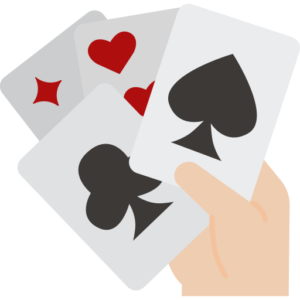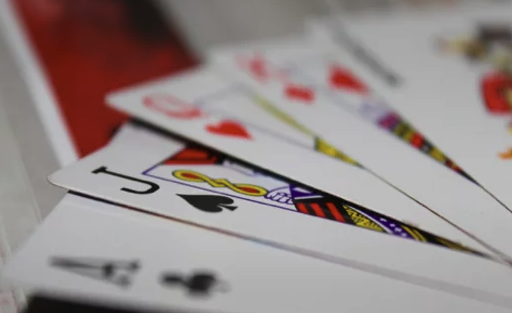Glossary Term
Check Raise
Check Raise
Used In: Poker
Introduction
The check-raise is a powerful and strategic move in poker that can be used to manipulate the flow of a hand. It involves a player first checking when it’s their turn to act, giving the impression of weakness, only to raise after an opponent places a bet. This move can be highly effective when used at the right moment, often putting pressure on opponents and forcing them to make difficult decisions.
By checking and then raising, players can potentially increase the size of the pot when they have a strong hand. It also serves as a way to deceive opponents, leading them to believe they are in control of the hand when, in reality, the check-raiser has the advantage. Timing and knowledge of the opponent’s tendencies are crucial when executing this move successfully.
While the check-raise is most commonly associated with strong hands, it can also be used as a bluff to make opponents fold hands they may otherwise continue with. Mastering the check-raise requires a solid understanding of poker strategy and the ability to read the table and opponents’ actions. When done correctly, it can be a key tool for gaining an edge and winning pots in poker games.
In Depth Look
The check-raise is often used as a way to maximize value when a player holds a strong hand. By checking initially, the player lures an opponent into betting, which increases the pot size. Once the opponent commits chips, the player raises, catching them off guard. This tactic works best against opponents who are likely to bet when they have a marginal hand, giving the check-raiser an opportunity to capitalize on their actions. It’s important to choose the right time and opponents for this move, as overuse or poor timing can make the play obvious and ineffective.
However, the check-raise isn’t just a tool for strong hands—it can also be a bluff. By checking and then raising, a player can make it seem like they have a powerful hand when, in reality, they might not. This strategy is particularly effective when the board texture supports a strong hand, such as having coordinated cards that could complete a straight or flush. A well-timed bluff can force opponents to fold hands they might otherwise have played, making the check-raise a versatile move in a player’s arsenal.
- The check-raise is most effective when used sparingly. If opponents catch on, they may begin to play more cautiously or avoid betting when you check, rendering the move less effective.
Mechanics
AThe mechanics of a check-raise are simple but require careful execution. First, when it’s your turn to act, you choose to check, which means you pass the opportunity to bet and allow the next player to make a move. By doing so, you often give the impression of having a weak or neutral hand, which can encourage an opponent to bet. Once that player places a bet, you then raise, increasing the stakes and potentially forcing your opponent to make a difficult decision. The key to this move is the timing and the opponent’s behavior—if they bet into you, it signals that they might have a strong hand, making it an ideal time to strike.
When performing a check-raise, you must be aware of the board and your position at the table. If the community cards support a strong hand, such as completing a straight or flush, your check-raise will seem more believable. Additionally, consider the opponent’s tendencies; aggressive players are more likely to bet, making them ideal targets for a check-raise. However, if you’re playing against passive opponents who rarely bet, the move may be less effective. Overall, a successful check-raise is about reading the situation correctly, understanding your opponents, and executing the move at the right time.


Illustrated Example
Let's say you're playing a no-limit Texas Hold'em game. You’re in the small blind position and hold Ace of Spades and King of Hearts. The flop comes down as 10 of Spades, Jack of Spades, 2 of Clubs. You check, indicating a lack of strong interest in the hand. The player in the cutoff position, who has been playing aggressively, bets 50 chips. You decide to check-raise, raising the bet to 150 chips. The cutoff now faces a tough decision. They might think you’re on a draw or that you have a strong hand like a straight or flush. If they call, the pot increases, but if they fold, you win the pot immediately.
In this case, the check-raise works because of the board texture. The combination of spades and high cards like 10 and Jack makes it likely that you could have a straight or a flush draw. The opponent, seeing your check and then your raise, may believe you have either completed one of those hands or are trying to bluff them out of the pot. The critical part of the check-raise is that it creates uncertainty, forcing the opponent to reconsider their hand strength. If they fold, you win the pot without a showdown, and if they call, you potentially win a much larger pot due to the increased bet size.
| Action | Player in Small Blind | Player in Cutoff |
|---|---|---|
| Pre-flop | Check | Bet 50 chips |
| Flop | Check | Bet 50 chips |
| Check-Raise | Raise to 150 chips | Call or fold |
| Result | Win the pot if the opponent folds, or increase pot size if they call | Fold or Call the raise |
Player Perspective
From a player’s perspective, the check-raise is a strategic move that requires a good understanding of the game and an ability to read opponents. If you’re holding a strong hand, such as a flush draw or a top pair with good kickers, the check-raise can be an excellent way to extract more value. By checking first, you give the impression that you have a weak hand, tempting your opponent to make a bet. When they do, you raise, potentially increasing the pot significantly. The key is to make sure your opponent is likely to bet, so you must consider their tendencies—aggressive players are often prime targets for a successful check-raise.
On the other hand, a check-raise can also be a bluff. In this case, you're trying to represent a stronger hand than you actually have. For example, if the board is showing potential for a straight or flush, you may check and raise, making it seem like you've completed one of those hands. This can force an opponent to fold if they believe you're holding a better hand. While it can be an effective tool, bluffing with a check-raise requires careful timing and knowledge of your opponent’s habits. If overused or executed poorly, the check-raise can backfire, leaving you vulnerable if the opponent calls or raises.
Conclusion
In conclusion, the check-raise is a valuable poker tactic that allows players to manipulate the flow of a hand by taking advantage of an opponent’s bet. Whether used to build the pot with a strong hand or to bluff, it relies on timing, position, and a keen understanding of your opponent’s tendencies. When executed correctly, a check-raise can put pressure on your opponents, force difficult decisions, and ultimately increase your chances of winning the pot. However, like any strategy, it should be used selectively and with caution to avoid becoming predictable.
The Top Online Casinos for Playing Poker
These platforms prioritize player satisfaction by providing intuitive interfaces, seamless gameplay experiences, and robust security measures to ensure a fair and enjoyable environment for all users.


Author
Branimir Ivanov | Senior News Contributor
- TABLE OF CONTENTS






